This is the third time I’m starting writing the Tainted Grail: Fall of Avalon review anew. While I really want to call it “Polish Skyrim,” it is a lot more than that. It also does so many small things differently that its very easy to get lost in the weeds and balloon the review. But while it took me 67 hours to finish the game, it should take you a lot less to read my review. In short, Tainted Grail: The Fall of Avalon is a good title already, but if you wait before buying it, it will get even better with patches.
The game starts, Dark Souls-ish-ly-like, with you rotting in a dungeon. You have one of those fantasy triple plagues. You’re also about to break out and, along the way, take up a passenger inside you: a sliver of King Arthur’s soul. He lead the people to Avalon to escape the Red Death, vanquished the mighty eldritch Foredwellers that lived there, pushed back the mutating mists of the Wyrdness, and established Kamelot for all. Except that everything has gone to the pits in the 600 years since. Kamelot tries, ever more desperately, to keep the lands together. The coalitions Arthur build are disintegrating in violent, abhorrent ways. Wyrdness twists villages overnight and displaces those lucky enough to escape. People turn to banditry and thus travel and trade is breaking down.
Oh, and the Red Death? That’s the raison d’etre for the torture dungeon you’re in. It’s back.
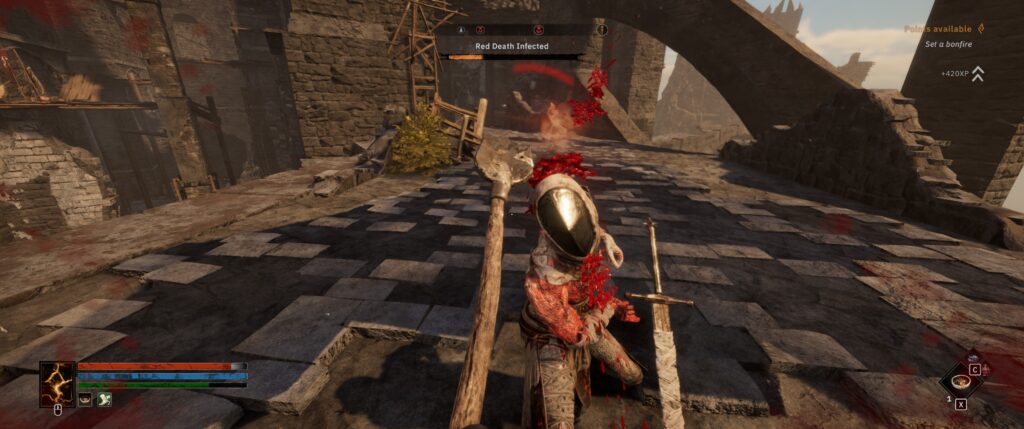
Dashing my dreams on the shores of Avalon
It is a fascinating setting to start playing in. But along the way, I realized something: the world I imagined while playing the tutorial dungeon (in the demo – but the save worked for the full game) and during my first hours in Horns of the South wasn’t exactly what you get in the game.
Sure, there are plenty of bandits, but there are no twisting mists. No spots on the map where you’d have to escape the mutations or enter tainted landscape. Sure, there are monsters about, and the sun going down starts the Wyrdnight, which boosts all the enemies. Human foes even get heavy metal makeup, but they’re not growing antlers on their legs, you know.
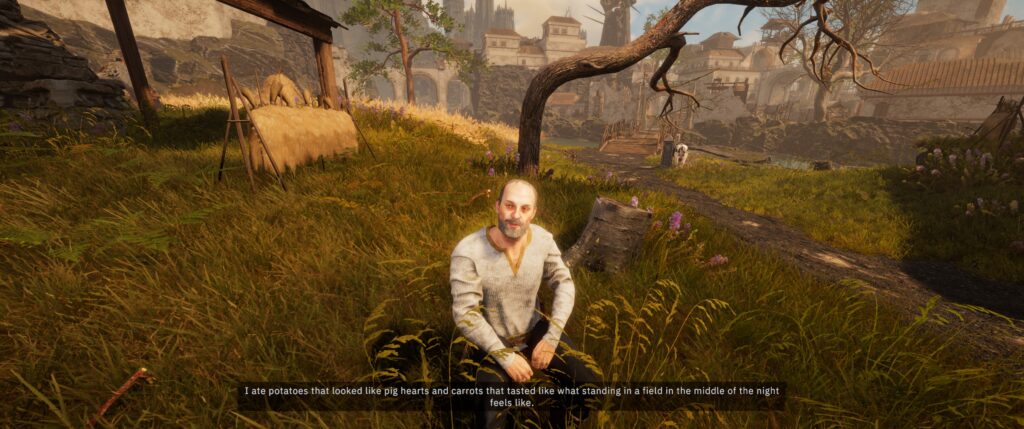
You won’t even get to visit Kamelot, which the game suggests is a metropolis crowded with poor refugees and struck with the Red Death.
Bad time for regular people, good time for adventurers
Nevertheless, I finished Tainted Grail over as many hours as it took me to beat Cyberpunk 2077 and what I’m writing is an endorsement, not a 7,000-word condemnation. That’s because despite all of the flaws of the game, and it has many, the sum of all the small decisions outweigh the downsides. Plus, in the nearly three months it took me to go from getting the review copy to penning these words, Tainted Grail received at least two major patches. They solved a lot of the more egregious issues and adding missing content.
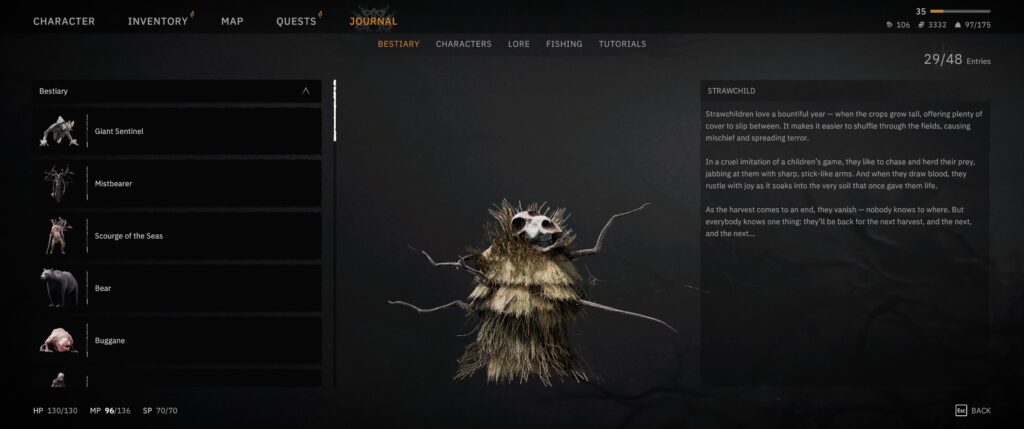
The world is more compelling that most individual characters – especially since so few of them are reoccurring. You can start and finish other games by the time you meet some of the people from the tutorial dungeon again. And most characters don’t have connections out of their zone (out of the game’s three).
On the other hand, King Arthur will be your most constant companion. He’s a man out of his time, a soul who has forgotten a lot of his past due to shattering. But he is still privy to lore none of the protagonist’s contemporaries know. And Arthur… well, his choices and opinions on nation-building may not match your own.
But there are subtleties to storytelling across the whole title. The quests or at least their stories are rarely straightforward and they will find ways to surprise you. And all of them are very strongly themed on decline and crisis, and what we chose to do in the face of it.
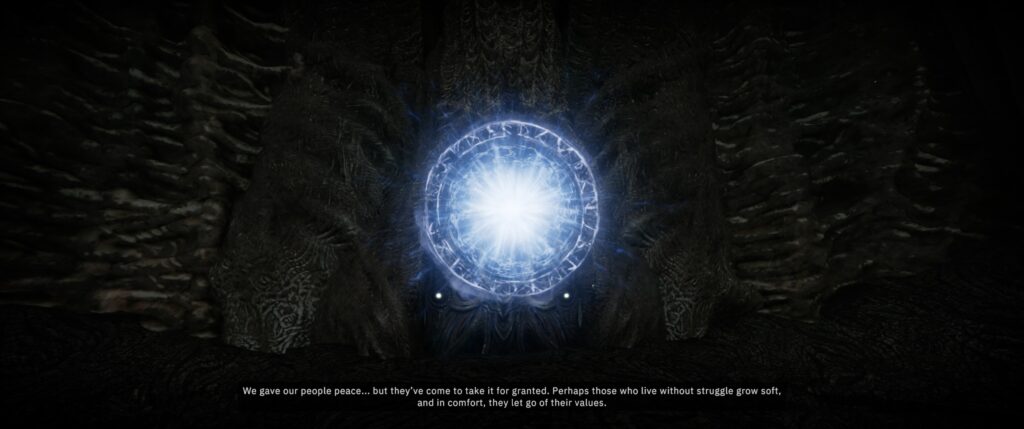
Do you stick to the past and try to restore status quo, no matter the cost to other? Or will you choose a new path, now matter how scary it is, no matter what it will demand of you? Even if these questions are not voiced, you don’t need to look hard to see that they suffuse the land from the highest ruler to the lowliest peasant.
By fireball and sword
But while story is all and good, no game review can be done without looking at the gameplay. So, how is the basic game? At the core, it’s a first person fantasy game. Run around in first person (though third person was introduced as an unstable accessibility feature). Slash with the LMB, defend with the RMB.
Except that there are also heavy attacks, and blocks coexist with timed parries, and your stamina doesn’t recharge while blocking. You have stamina, sure, but unlike in Todd’s garbage world, it doesn’t much matter outside combat, while its management in combat makes it that more skill-based and exciting.
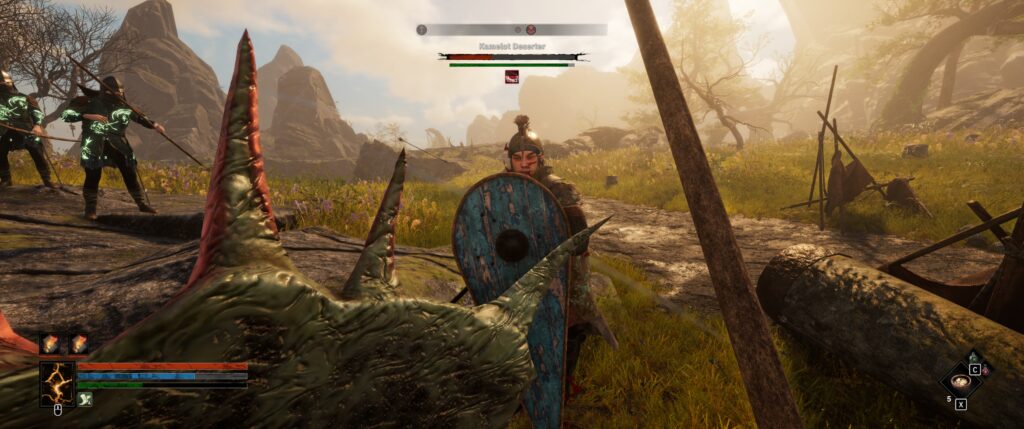
You also have a limited amount of recharging dashes, which also interface with stamina spend, and your dashes are keyed into your armor weight system, which is based on the sum weight of your armor-
Look, the combat system is fun and exciting, even if, by the end of the game, I had the gear and the skills to trivialize most encounters. But for the first solid half of the game, my character (Haze, who I flippantly gave the ugliest tattoo design thinking I’d create a new character if I ever got the full game) was fragile.
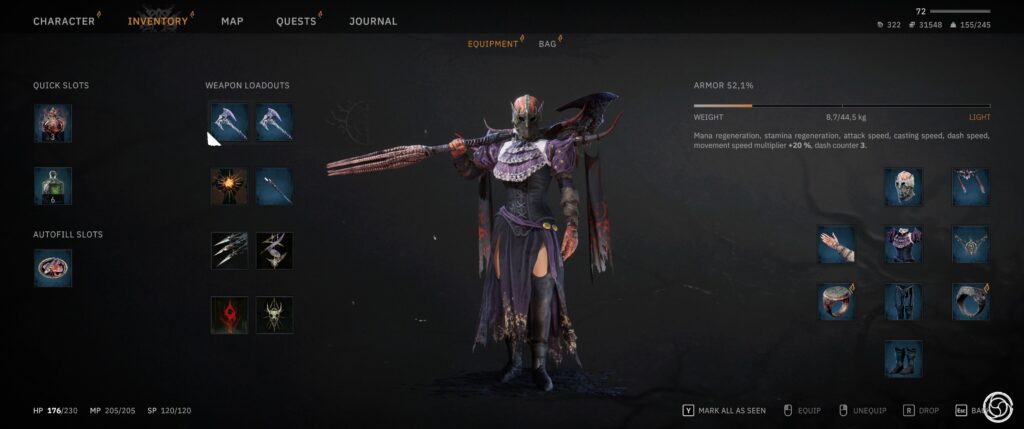
It got pretty solid in mid game, and by the end, I was death. So, it gets easy on hand, but on the other, it is actually nice to have some power growth outside of player skill. You will feel it, too, as Oblivion-cursed enemy level scaling is not welcome in the lands of Avalon.
Given chance, I’ll make a wizard in any CRPG as, like in most TTRPGs, wizards get the most toys. Not exactly so in Tainted Grail: The Fall of Avalon, where melee combat is more exciting in of itself, and also because most spells are straightforward damage dealers. Plus, fairly early on, I discovered an absolute monster of a fireball spell that would nearly drain my mana reserves, but would also sent unaware enemies cartwheeling through the air through stealth-boosted damage bonuses. It was a fun way to trivialize individual encounters, a strong opener for larger skirmishes, and a decent contributor to boss fights.
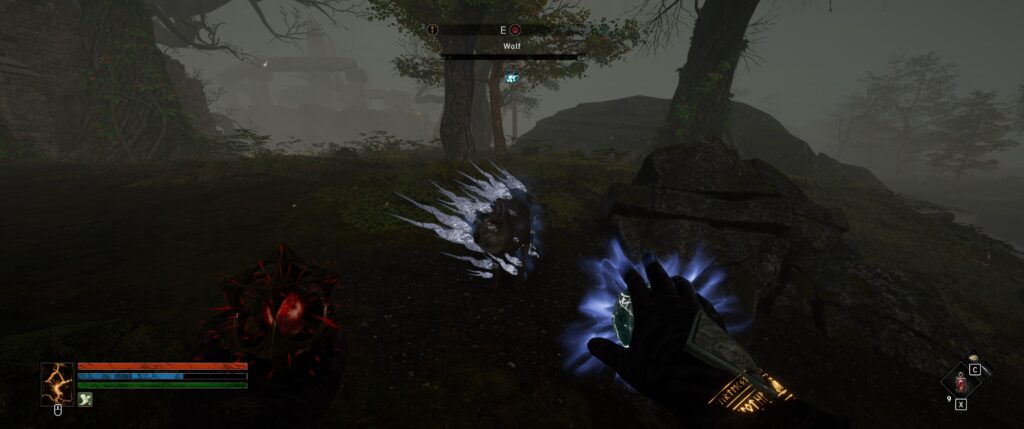
Unfortunately, that meant that most other spells fell by the wayside – even when all spells have a slightly different alternate attack when charged. It has to be at least partially due to the developers putting a lot of the more interesting spell effects into (craftable) throwable weapons. You have crystals that banish enemies for 8 seconds (for crowd control) or create points of gravity to pull in or repel foes, flasks of Molotov cocktails, and even pocket sand that blinds enemies.
There also exists a separate field of spells I eventually chose to abandon: summoning. Summoning has its own skill tree, which increase the number of summons you can have at one time. Unfortunately, summons are taken from the general enemy pool, but with an ugly green filter on top of their regular texture. Summons fight for you – you can even direct them at specific enemies. But NPC vs. NPC fighting is so borked, that even fairly lowly summons can act as sufficient distractions, tying the enemy down while you fry them. And that’s without investing into any skills.
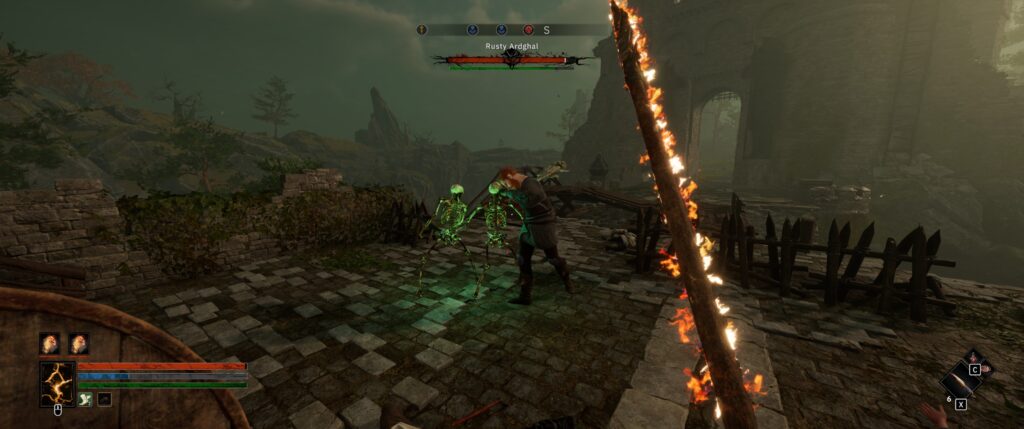
So hopefully, the developers of Tainted Grail: The Fall of Avalon will use that anonymous data they collect on deaths and item usage (you can enable this in the option) to fine-tune the game in a way that will encourage more diversity of play.
And I know the devs care about different ways to play. You can already see that in action: I don’t know if I’ve ever seen a game more generous with respec potions before playing Clair Obscur: Expedition 33. However, this may be an outgrowth of a game inspired by Arthurian mythos being heavily weighted in favor of two-handed swords.
I wanted to use a spear, but only found one that was worthwhile.
Nobody “crafted” the Excalibur
As mentioned before, crafting exists. At its best, it allows you to use monster parts to create powerful armor sets that can’t be found anywhere else – just like in Wartales. Unfortunately, it’s a lot less useful for creating weapons, and spending metal on throwing knives always felt like a dicey proposition. Especially when you consider that you’ll feel the metal crunch by the end of the game as you try to lighten your favorite armor and increase that stats of your gear.
But the saddest part is cooking and alchemy. Cooking can create around 20 different types of meal. 99% of them are just slow health regen. Alchemy can create boosting potions, but is most useful for instantaneous healing potions, which exist in far too many types for what are essentially level boosted iterations of each other.

I’d much rather like if the game had Witcher 1-type potions that last a long time and skill based crafting a la Wartales. And since I’ve mentioned Wartales twice already, food in that game had a much larger impact than just being a simple health-boost. Yet another thing that can be addressed in patches.
One thing that absolutely won’t be fixed is the trash loot game. Most containers in the game contain but a single food ingredient. Many containers with multiple items will furnish their list with a single piece of vendor trash, like a wooden cup. So it’s not as bad as Todd insisting that each table has to be furnished to seat 20 and have every individual piece of cutlery be lootable, but it makes for busy work, a waste of time even if you’re using those materials.
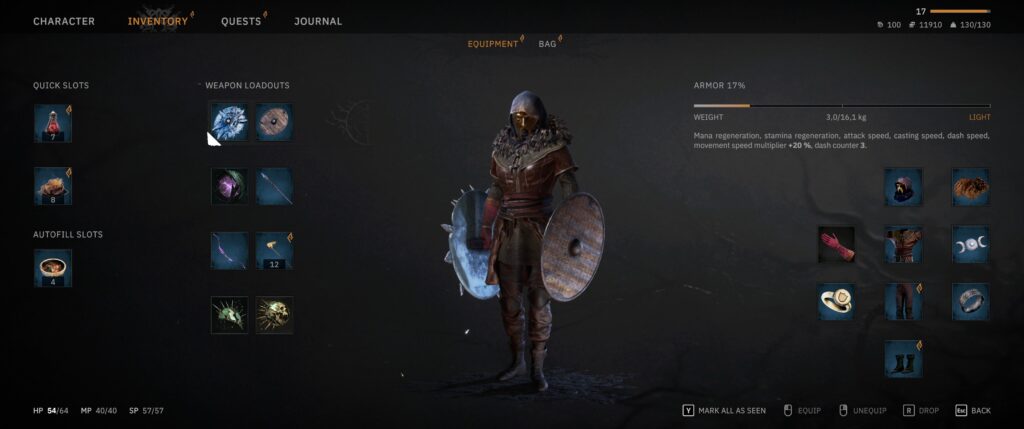
Also, it’s just immersion breaking to have every dungeon that hasn’t been visited for the last 300 years to have fresh milk and cheese stashed away in ever-present crates.
On a related note, it’s more funny than anything how many locks in the game can be immediately picked from the initial position.
What was Kamelot built upon?
On the technical side of things, Tainted Grail: Fall of Avalon looks solid. It will not win any awards anytime soon, but it has some great natural vistas. The nights feel magical and spooky, and the ruins mark the passage of time – and the passing of order – that’s diminishing Avalon.
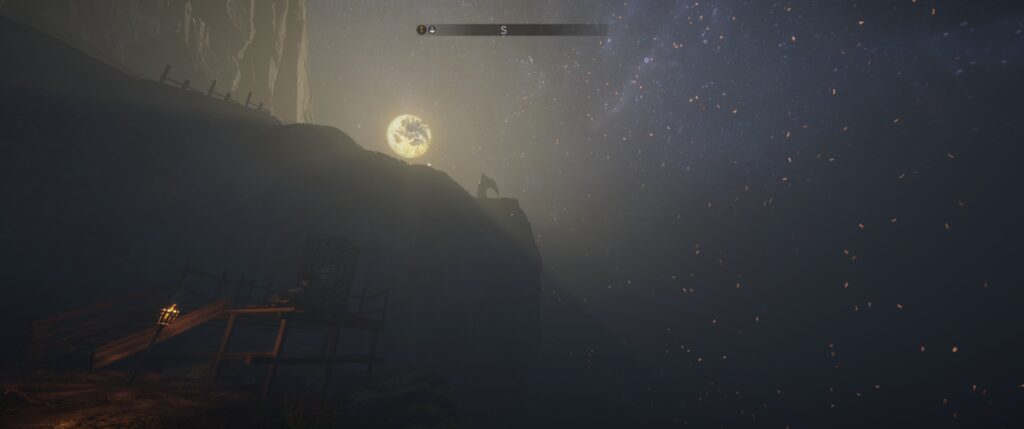
The magical effects are also quite neat as equipped spells swirl around your hands and flare with intensity when cast. Not that the melee animations are bad, with the exception of the executions: it’s literally always the same animation, and the enemy has to be so low on health that you might not even bother.
Some people may not enjoy the way enemies tend to ragdoll away after particularly powerful finishing blows, but by the end of the game, I actually came to enjoy it.
The real issues have to do with how enemies fight. Some of it is down to AI being unable to handle fighting AI – quite late in the game, even unupgraded summons would cause an undue amount of distraction as the the enemies targeting them seemingly failed to hit.
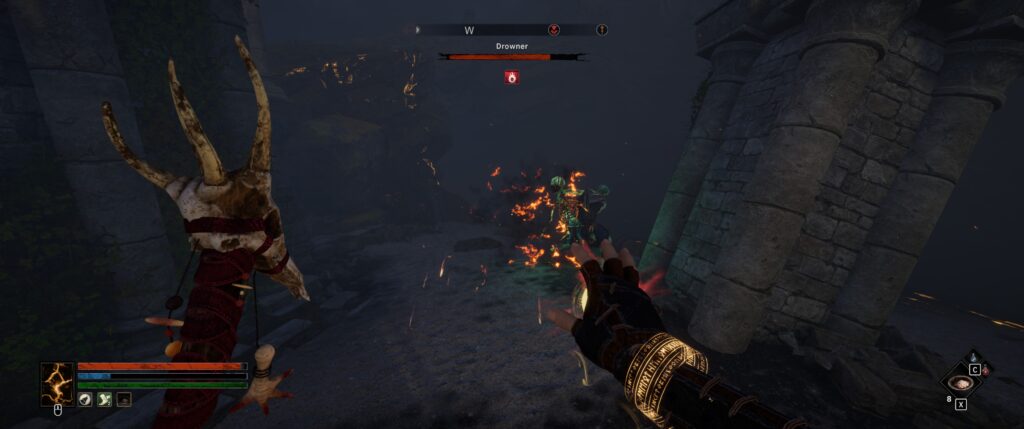
But even when fighting just the player, the NPCs felt like they lacked moves (the bear and shield-bearing enemies love knocking you to the ground), which is weird in a game where devs have been thoughtful enough to give all human foes both ranged attacks to fighting kiting (throwing knives) and exaggerated health potion drinking animations,
At the same, if you can spot reused dragon movesets across Bethesda titles, you will also soon notice some enemies having reused move sets in Tainted Grail. It is a little sad when an ancient god is just a jacked up version of some cave troll you’ve killed many times already..
There are also countless small indignities littered through the game that are constantly being patched out. The one I want to see go away the most is the ability to set a fire insides Arthur’s burial chamber as it can lead to some out-of-sequence dialogues as well as just looking silly.
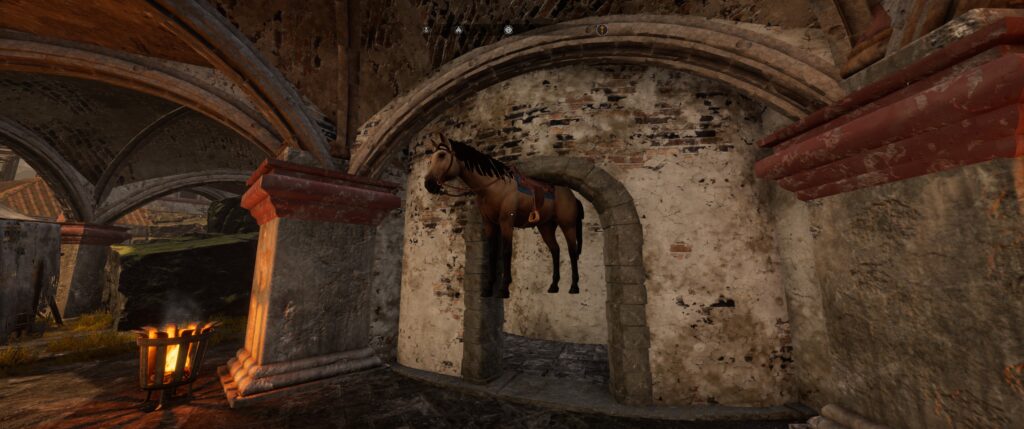
Now, when it comes to audio, the Tainted Grail: The Fall of Avalon shines in both in music and voice acting. The main menu theme could use to be longer, or at least have the opening dirge be separate from the evil cultist chanting GINUNGAPAP-MUSPELHEIM-NIFLHEIM. All the dialogue in the game is fully voice acted and the devs did not cheap out on VA talent.
I particularly liked the weird way the leader of the Theud tribe speaks. But as Arthur will be the one to most consistently talk to you throughout the game, the devs had made sure to give him an appropriately stately and grandiose VA that really matches his role and his model.
GAME GOOD
In conclusion, I highly recommend Tainted Grail: Fall of Avalon to everyone but the most hardcore Souls-like freaks. To them, the combat will not be tight or hard enough. The game was a lot of fun even if my early impressions and hopes turned out to be false. It is the first RPG I remember in years where I’m seriously considering getting back to replay sometime later. Steam achievements show that I left some major secrets undiscovered, and with a year or two of patches, as well the potential that comes with the newly introduced mod support, it will be even better.

